Hanko for Foreigners: The Complete Guide to Your Japanese Personal Seal, from Bank Accounts to Jitsuin Registration
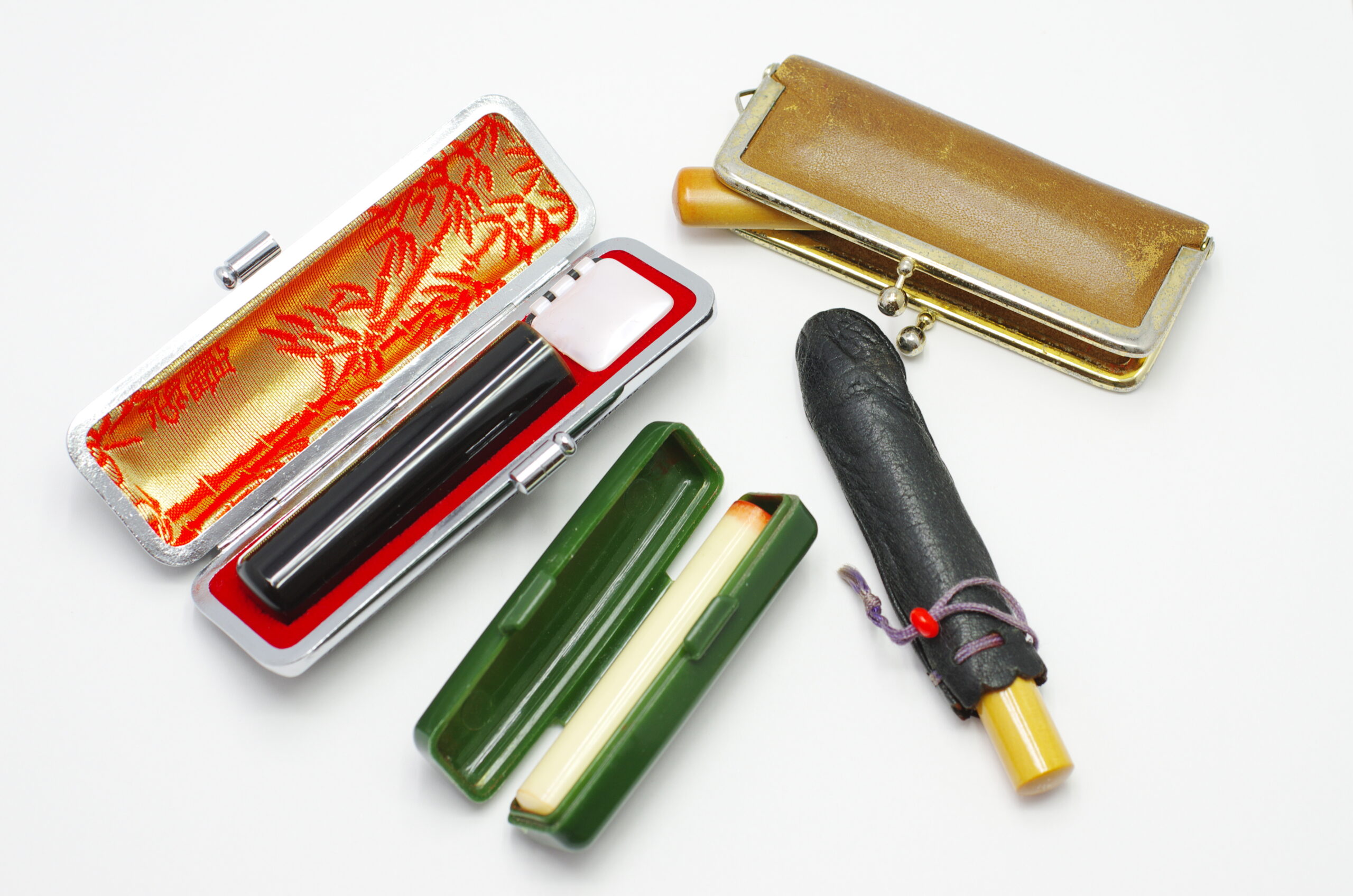
“I’m trying to sign an apartment lease and they’re asking for a jitsuin. The bank wants a ginko-in. Suddenly, my signature isn’t enough. What’s the difference between these Japanese seals, where do I buy one, and how do I avoid messing up this important contract?” If that sounds familiar, you’re not alone.
The truth is, mastering Japan’s hanko system is simple once you understand the key principle: the seal you use matches the importance of the transaction. Knowing the difference between your daily seal, your bank seal, and your officially registered seal is the key to unlocking your life here.
In this article, we’ll walk you through everything: what each type of Japanese personal seal is for, a step-by-step guide on how to get your own, and a clear-cut process for jitsuin registration so you can sign with total confidence.
Introduction: An Essential Guide to the Hanko: Japan’s Personal Seal
You’re about to sign the lease for your dream apartment in Tokyo. You’ve reviewed the contract, you’re ready to commit, and you reach for a pen. But the agent pauses, waiting expectantly for you to produce a small, circular stamp. Suddenly, you’re confronted with a world of unfamiliar terms like jitsuin (実印) and ginko-in (銀行印), and you realize your signature alone won’t cut it.
If this scenario leaves you feeling confused and a little panicked, you’re not alone. For many foreigners, the hanko (判子) system is one of the first and most confusing cultural hurdles in Japan. This is more than just a rubber stamp; it’s a deeply ingrained part of legal and personal identification.
This guide is designed to turn that anxiety into confidence. We will demystify the entire Japanese personal seal system, transforming it from a source of frustration into a tool you can use with ease. By the end, you’ll be ready to handle any contract or registration process that comes your way.
What is a Hanko, and Why Does It Matter?
In simple terms, a hanko (判子) is a personal stamp that serves as a legally recognized seal of approval in Japan. It functions much like a signature in Western countries, used to authorize documents, confirm agreements, and prove your identity. The red ink impression left by the stamp is technically called the inkan (印鑑), and it is this mark that carries official power. To navigate life in Japan smoothly, understanding the hanko isn’t just helpful—it’s essential.

A Brief History of the Japanese Personal Seal
The hanko is not a modern invention; it has deep cultural and historical roots. The tradition came to Japan from China over 1,500 years ago and was initially a symbol of authority reserved for the Emperor and his most trusted nobles. Its use later expanded among the samurai class to authenticate official orders. However, the Japanese personal seal became a standard for everyone during the Meiji Period (1868-1912). As the government modernized, it created a national registration system that required citizens to use a hanko for official and legal documents. This cemented the hanko’s role in society, associating the act of stamping with a serious sense of personal responsibility.
Why Your Signature Isn’t Always Enough in Modern Japan
While you’ll certainly sign for credit card purchases, many of Japan’s most important institutions—including banks, city offices, and real estate companies—have procedures built around the hanko. For major transactions, a registered inkan is often considered the most secure form of verification. It is traditionally viewed as being more difficult to forge than a handwritten signature and, in the case of a registered seal, is linked to an official government record. Although Japan is gradually embracing digital signatures, the hanko remains an indispensable part of many foundational processes. Knowing when and how to use one is a key skill for any resident.
The Three Types of Hanko Every Foreigner Should Know
Not all hanko are created equal. In Japan, personal seals are divided into three distinct categories based on their function and level of legal importance. Understanding the role of each one is the most critical step to handling Japanese paperwork with confidence. Think of them as different keys for different doors: one for your daily life, one for your finances, and one for major legal commitments.
Mitome-in (認印): Your Everyday, Go-To Seal
The Mitome-in (認印) is your most basic, casual seal. It requires no official registration and is used for simple, everyday acknowledgments. Because they are unregistered, mitome-in are often inexpensive, mass-produced, and can be purchased easily at stationery stores. If you have a common Japanese surname, you can likely find one on the rack. Foreigners can easily have a simple one custom-made with their name in katakana or the alphabet.
Common Uses
Think of the mitome-in as a substitute for a casual initial or a checkmark. You’ll use it for low-risk, routine tasks like:
- Accepting a package from a delivery driver.
- Signing off on internal company documents to show you have read them.
- Confirming receipt of mail at your apartment.
Ginko-in (銀行印): The Key to Your Financial World
The Ginko-in (銀行印) is a step up in importance. This is the hanko for your bank account. When you open an account at most traditional Japanese banks, you will register a specific seal with that institution. This registered impression, your ginko-in, becomes your official identifier for that bank and is used to authorize significant transactions, such as making large withdrawals at the counter or setting up automatic bill payments.
Why you need a special hanko for a bank account
A dedicated ginko-in acts as a crucial layer of security for your finances. By registering a unique seal with your bank, you are creating a verification method that is tied specifically to your identity at that branch. While some online-only banks and certain transactions now accommodate signatures, the vast majority of in-person banking procedures still rely on the ginko-in.
The critical difference between a Ginko-in vs. Mitome-in
For security reasons, your ginko-in should never be the same as your mitome-in. This is a critical point. If you use the same cheap, everyday seal for both package deliveries and banking, you risk a serious security breach if it’s lost or stolen. A person who finds your mitome-in could potentially use it to access your bank account. Always create a distinct ginko-in and store it in a safe place, separate from your bankbook (通帳, tsuuchou).
Jitsuin (実印): The “Ultimate Seal” for Life’s Biggest Moments
The Jitsuin (実印) is the most powerful hanko you will own. It is your official, legally binding seal. To become a jitsuin, a hanko must be officially registered in your name at your local municipal office (e.g., city hall or ward office). Because it holds such significant legal power, a jitsuin must be uniquely identifiable and cannot be a mass-produced stamp.
When you absolutely need a Jitsuin
You will need a jitsuin for life’s most important contracts and legal procedures. These are high-stakes situations where your identity must be verified without question. Examples include:
- Buying or selling real estate.
- Signing a rental agreement for an apartment (quite common).
- Taking out a significant loan.
- Purchasing a car.
- Incorporating a business.
- Writing a will or handling an inheritance.
How Your Jitsuin and Inkan Certificate Work Together
The jitsuin stamp alone is not enough to complete these transactions. Its power comes from being paired with an Inkan Certificate, or Inkan Touroku Shoumeisho (印鑑登録証明書). This is an official document issued by the city office that certifies that the impression made by your jitsuin is genuine and officially registered to you. When you sign a major contract, you will stamp it with your jitsuin and submit this certificate alongside it. This two-factor authentication system is what makes the jitsuin the ultimate seal of approval in Japan.
Quick Comparison: Jitsuin vs. Ginko-in vs. Mitome-in
To make it easier, here is a simple breakdown of the three seals.
| Feature | Mitome-in (Everyday Seal) | Ginko-in (Bank Seal) | Jitsuin (Official Seal) |
|---|---|---|---|
| Registration | None | Registered with your bank | Registered with your local government office |
| Main Use | Daily, low-risk tasks (e.g., deliveries) | Banking transactions | Legally binding contracts (e.g., property, loans) |
| Security Level | Low | Medium | High |
| Can it be pre-made? | Yes | No (should be unique) | No (must be unique) |
How to Get a Hanko in Japan: A Foreigner’s Practical 5-Step Guide
Getting your first hanko can feel like a daunting task, but it’s actually a straightforward process. By following these five steps, you can confidently navigate the entire experience, from choosing the right name to making the purchase.
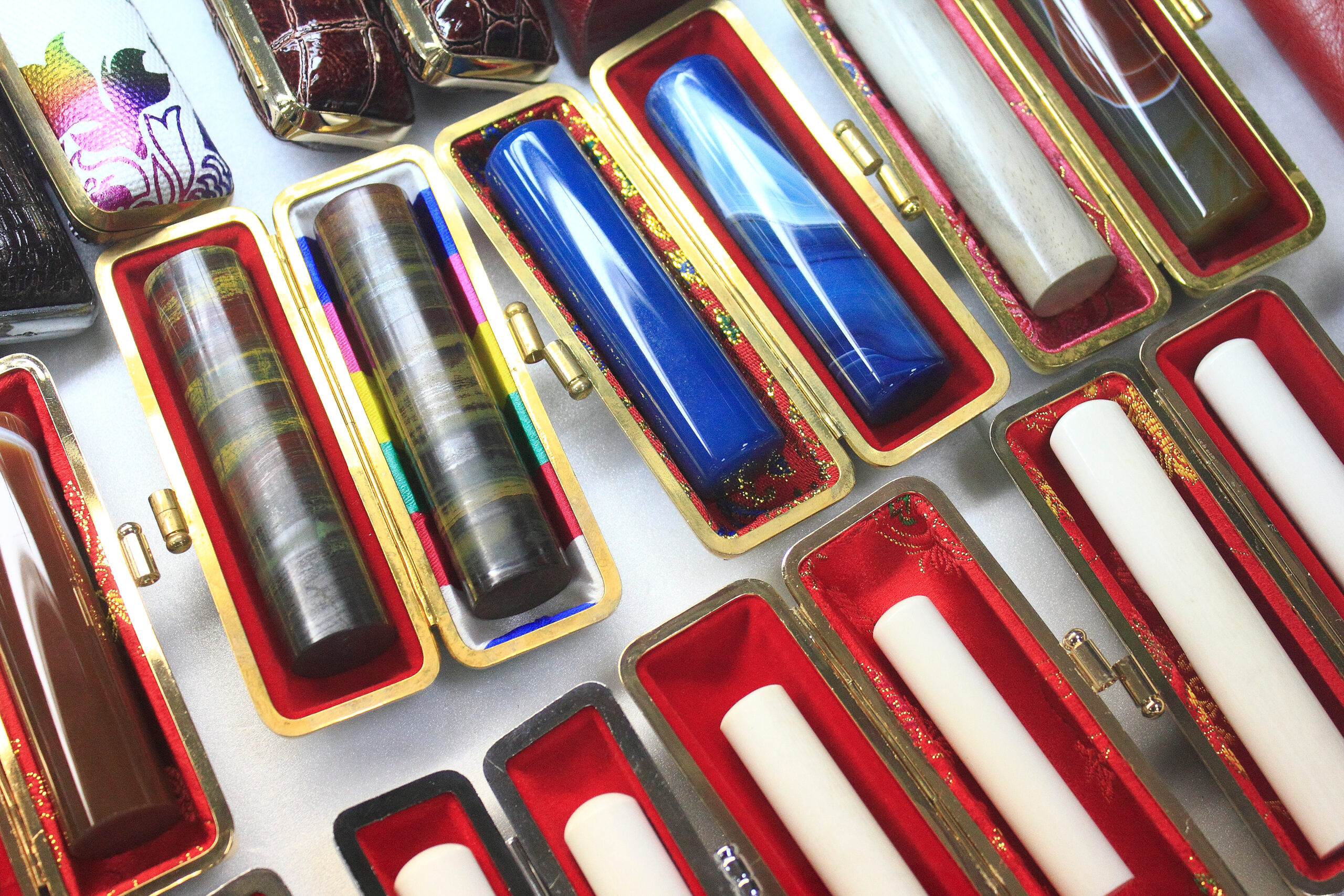
Step 1: Choosing Your Name (Alphabet, Katakana, or Both?)
The first decision is what name to have carved. For a simple mitome-in, you have flexibility. You can use your family name in the Latin alphabet or have it transliterated into katakana (カタカナ), the Japanese script used for foreign words. However, for a ginko-in and especially a jitsuin, the rules are stricter. Your seal must match the name registered on your official identification, such as your Residence Card (在留カード, Zairyu Card). Most municipal offices require the name on your jitsuin to be a representation of your legal name. The safest option is to use your family name as it appears in the alphabet on your card. Check with your local city office if you are unsure about their specific rules regarding name registration.
Step 2: Selecting the Right Material
Hanko come in a variety of materials, which often correspond to their price and intended use. For a mitome-in that you might use daily and aren’t worried about losing, inexpensive materials like plastic, laminated wood, or rubber are perfectly fine. For your more important ginko-in and jitsuin, it’s wise to invest in something more durable and unique. Common choices include black buffalo horn (黒水牛, kuro suigyu), boxwood (柘, tsuge), and for the highest level of durability, titanium. A more durable material not only lasts a lifetime but also creates a sharper, more consistent impression.
Step 3: Where to Buy a Hanko in Japan
You have several options when it comes to purchasing your seal, depending on your needs for speed, cost, and customization.
For Quick & Easy Seals: Don Quijote and Local Stationery Shops
If you just need a basic mitome-in quickly, large chain stores like Don Quijote (ドン・キホーテ) or major stationery shops often have automatic hanko-making machines. You can input your name in katakana, choose a font, and the machine will carve a simple seal for you in under 30 minutes. This is a fast and affordable option, but it’s only suitable for an unregistered, everyday seal.
For Custom & Official Seals: Professional Hanko Shops and Online Stores
When you need a high-quality ginko-in or jitsuin, your best options are a professional seal shop. These specialists can carve your name in the alphabet and offer a wide range of high-quality materials. They provide expert advice and ensure your seal is well-made. Alternatively, many online stores now cater to foreigners, allowing you to easily order a custom seal with your alphabet name from the comfort of your home. These online retailers are often an excellent and convenient choice for creating your official seals.
Step 4: Understanding the Costs: A Breakdown of Hanko Price in Japan
The hanko price in Japan varies dramatically based on material, size, and whether it is machine-made or hand-carved. A simple, machine-made mitome-in from a vending machine might cost between ¥500 and ¥2,000. A professionally made ginko-in or jitsuin from a material like buffalo horn will typically start around ¥5,000 and can go up to ¥15,000 or more. Hand-carved seals made from premium materials like titanium or ivory can cost significantly more, but for most residents, a quality machine-carved seal from a professional shop is more than sufficient.
Step 5: What to Say: Useful Japanese Phrases for a Smooth Purchase
Walking into a seal shop can be intimidating if you don’t speak much Japanese. Here are a few simple phrases to help you:
- To say you want to make a hanko: “Hanko wo tsukuritai desu.” (判子を作りたいです。)
- To specify the name: Point to your name on a piece of paper and say, “Kono namae de onegaishimasu.” (この名前でお願いします。)
- When asked about the material: You can point to the one you want and say, “Kore de onegaishimasu.” (これでお願いします。)
A Foreigner’s Guide to Jitsuin Registration
Registering your jitsuin (実印) is the final and most important step in setting up your official identity in Japan. This process, called inkan tōroku (印鑑登録), may seem daunting, but it’s a well-defined procedure. This guide will walk you through it, so you can handle it with confidence.
Are You Eligible? Checking the Requirements Before You Start
Before you head to your local municipal office, you need to confirm that you are eligible to register a jitsuin. The requirements are straightforward. You must be at least 15 years of age and be a registered resident of the municipality where you are applying. This means you must have an official resident record, or jūminhyō (住民票), at that office. If you have a Residence Card and have properly registered your address, you meet this condition.
The Step-by-Step Process at Your Local City Office
The registration itself takes place at the municipal office for your area, which is either a Shiyakusho (市役所) for a city or a Kuyakusho (区役所) for a ward within a larger city. You will need to find the counter responsible for resident registration, often called the Citizen’s Division or Jūmin-ka (住民課).
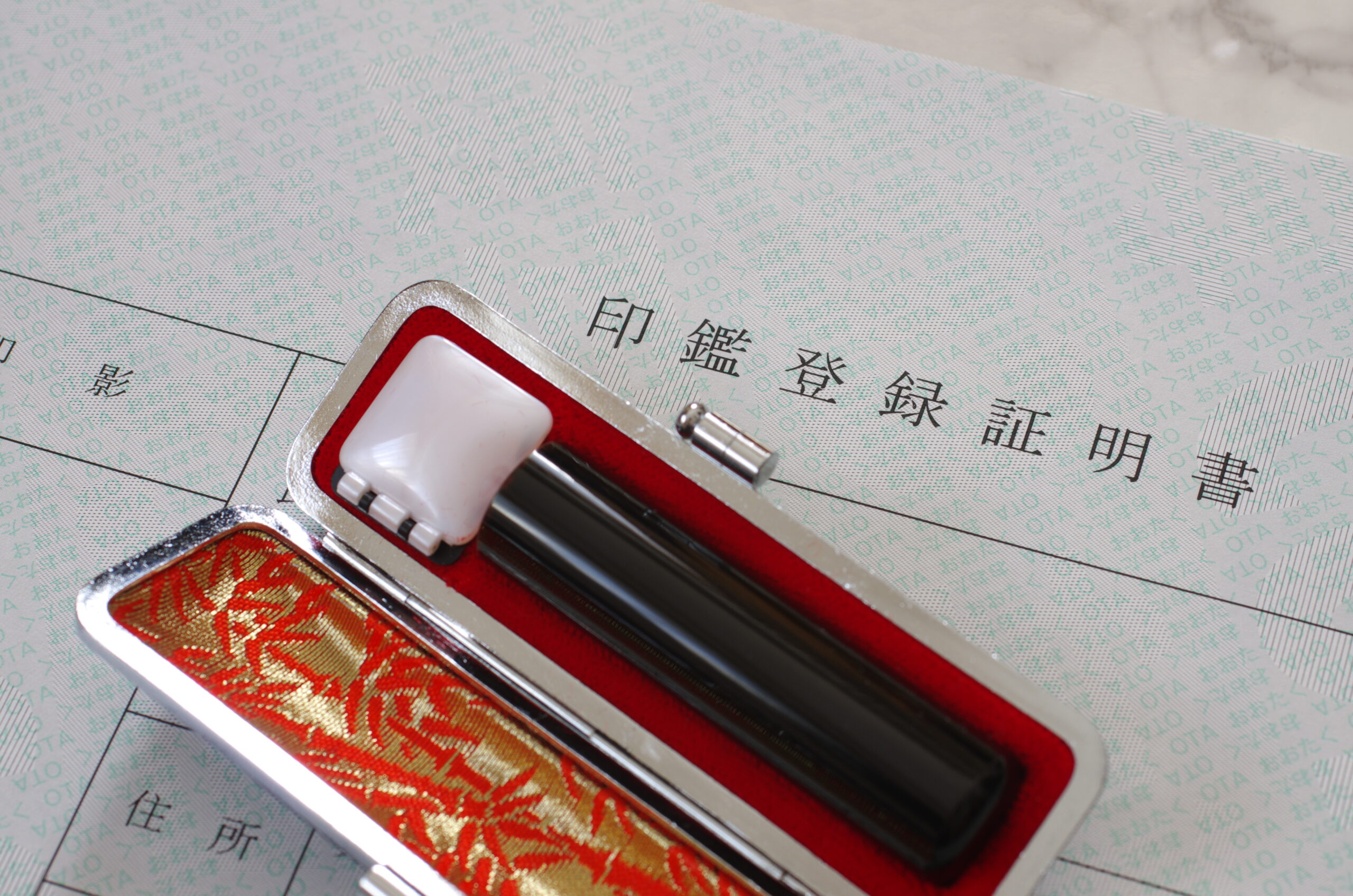
What to bring: Your residence card, the hanko, and your passport
To ensure a smooth process, make sure you bring the correct items. You will absolutely need the hanko you intend to register and your Residence Card (在留カード, Zairyu Card) as your primary form of identification. It is also highly recommended to bring your passport, as it can serve as a helpful secondary ID if requested.
Filling out the paperwork: A guide to the application form
At the counter, you will ask for the application form for seal registration, the Inkan Tōroku Shinsei-sho (印鑑登録申請書). This form will ask for your full name, address, and date of birth as they appear on your resident record. You will also need to make a clear impression of the hanko you are registering in a designated box on the form. While the forms are typically in Japanese, staff are usually helpful, and some offices may have English samples available.
Critical Details: Understanding Jitsuin Name Requirements
The name carved on your jitsuin must correspond to the name on your official resident record. This is a strict rule. You cannot register a seal with a nickname or a name that is not legally yours. However, you often have some flexibility in what part of your name you use.
Does it have to be your full name as shown on your residence card?
No, it doesn’t necessarily have to be your full name. Most municipal offices allow foreigners to register a jitsuin carved with either their full name, their family name only, or their given name only. For example, if your name is “Emily Jones,” you could likely register a hanko that says “Emily Jones,” just “Jones,” or just “Emily.” Registering a seal with only your family name is the most common and widely accepted practice. If you have an official alias, or tsūshō (通称), registered on your jūminhyō, you can also use that.
How to Get Your Inkan Certificate (印鑑登録証明書)
Once your application is approved, your registration is complete. You will be issued an Inkan Touroku Card (印鑑登録カード), a plastic card that proves you have a registered seal. This card is your key to obtaining the official certificate.
To get your Inkan Certificate (印鑑登録証明書, inkan tōroku shōmeisho), you have two main options:
- At the Municipal Office: You can take your Inkan Touroku Card to the counter or a designated automated machine at the city/ward office where you registered. This is the traditional method.
- At a Convenience Store (with your My Number Card): For much greater convenience, if you have a My Number Card (マイナンバーカード) with its electronic certificate function enabled, you can print your Inkan Certificate from the multi-function copy machines at most major convenience stores across Japan. Please note that the Inkan Touroku Card cannot be used at convenience stores.
Why you’ll need this certificate for almost every major transaction
This certificate is the crucial partner to your jitsuin. When you sign a major contract, you will stamp it with your jitsuin and also submit a recently issued Inkan Certificate.
It’s important to understand that the certificate itself does not have an expiration date. However, the institution you are submitting it to (such as a real estate agency, a bank, or a government office for a legal filing) will almost always require that the certificate was issued within a specific recent timeframe. The most common requirement, especially for legal and real estate transactions, is that it must have been issued within the last three months. This policy ensures that your seal registration is current and valid at the moment of the transaction. For this reason, you should always plan to get a fresh certificate specifically for each major contract you sign.
Using Your Hanko: From Banking to Package Deliveries
Theory is one thing, but how does the hanko system work in practice? Here’s a look at common situations where you’ll encounter these seals and which one you’ll need for each.
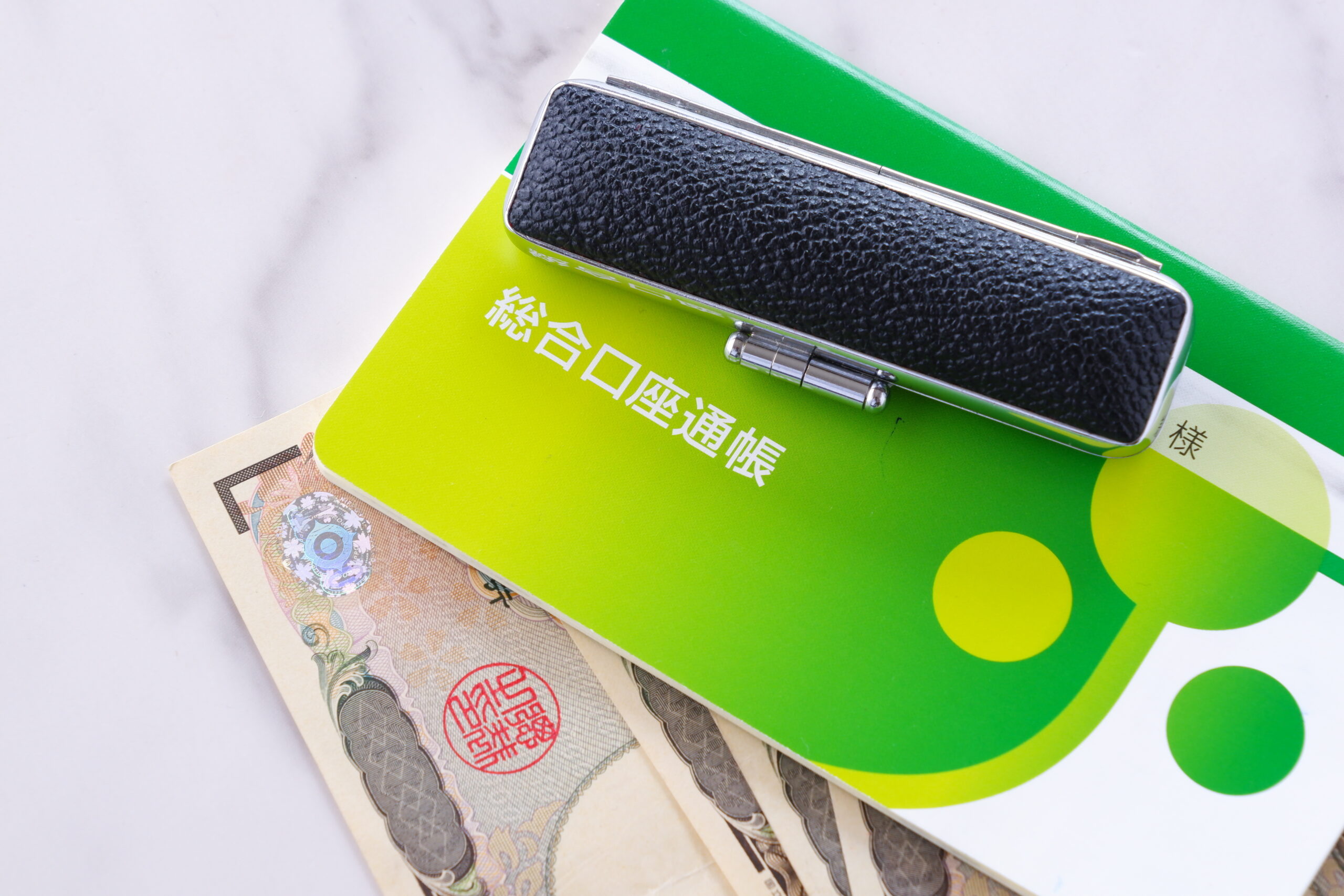
At the Bank: Opening an Account and Making Transactions
When you open an account at most traditional Japanese banks, you will be required to register your ginko-in. This seal then becomes your primary tool for authorizing transactions in person at the counter, such as making large cash withdrawals or applying for financial products. While ATMs use a PIN and online banking is becoming more common, your ginko-in is still the key to many fundamental banking functions. It serves as your official financial signature, so keeping it secure is paramount.
At the Real Estate Agency: Signing Your Lease with Confidence
This is one of the most common situations where you might need your jitsuin, though it is not always a strict legal requirement. While a simple mitome-in can be sufficient for some rental agreements, many landlords and property management companies request a jitsuin for added security, especially for long-term leases or higher-value properties.
Stamping the contract with your official seal, paired with the Inkan Certificate, provides a higher level of legal assurance for the property owner. Because the requirements can vary, the best approach is to ask your real estate agent in advance what type of seal will be needed for the contract. Being prepared with a registered jitsuin can often make the process smoother and demonstrates your readiness to finalize a serious agreement.
You Might Also Be Interested In:


At the Office: Understanding the “Ringi-sho” Approval Process
In many Japanese companies, especially more traditional ones, decisions are made through a consensus-building process called ringi-sei (稟議制). This involves circulating a proposal document, the ringi-sho (稟議書), to all relevant managers for approval. Instead of signing their name, each person traditionally stamps their mitome-in in a designated box on the document to show they have reviewed and approved the proposal.
As an employee, you may use your simple mitome-in for this purpose, participating in a core part of Japanese office culture. However, it’s important to note that many companies are rapidly moving this process online. In these modern workplaces, you will use a digital workflow system to give your approval with an electronic “stamp” instead of a physical one, though the underlying principle of building consensus remains the same.
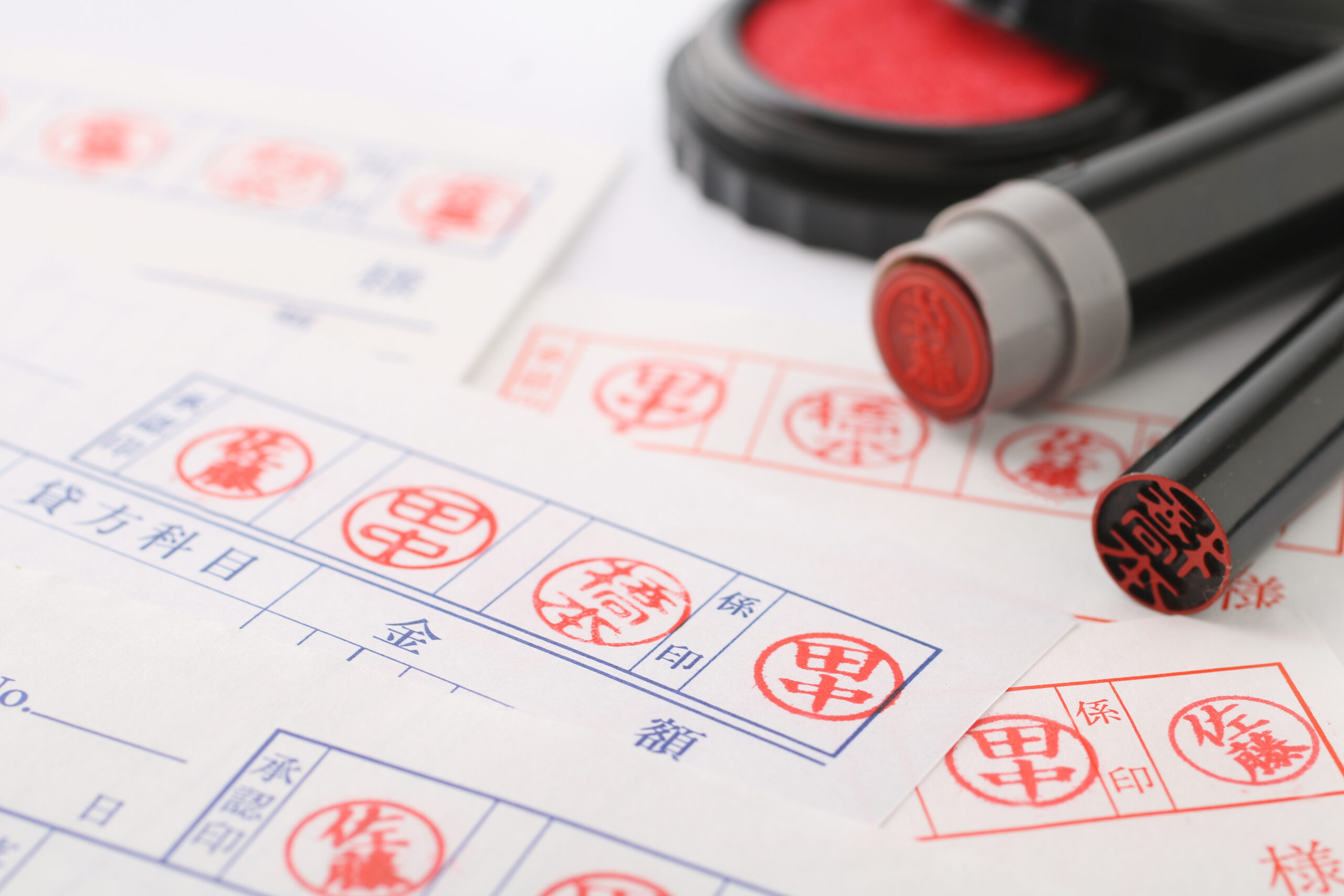
At Home: Accepting Deliveries and Other Daily Tasks
Your mitome-in will be your most frequently used seal. The most common scenario is when you accept a package from a delivery service like Yamato, Sagawa, or Japan Post. The driver will hand you an invoice or a digital device, and you will stamp it with your mitome-in as proof of receipt. It is also used for other simple daily tasks, like acknowledging you have seen a notice from your building’s management office. It’s a convenient and fast way to handle these routine interactions.
The “Datsu-Hanko” Movement: Japan’s Shift to Digital
In recent years, you may have heard about the “Datsu-Hanko” (脱ハンコ) or “seal-free” movement. This is a significant, government-led push to reduce Japan’s reliance on physical stamps in favor of digital solutions. While the hanko has been a pillar of Japanese society for centuries, the global shift towards digitalization, accelerated by the need for remote work during the COVID-19 pandemic, has highlighted its inefficiencies. This doesn’t mean the hanko is disappearing overnight, but its role is definitely evolving.

The Push for a “Seal-Free” Future
The Japanese government is actively encouraging businesses and administrative bodies to phase out the requirement for physical seals on many documents. The goal is to streamline processes, improve efficiency, and make it easier to conduct business digitally. For many companies, this has meant adopting internal workflow systems that use electronic approvals instead of a paper ringi-sho. However, this transition is gradual. While an IT company in Tokyo might be completely seal-free, a traditional manufacturing business or a small local shop may still rely heavily on the hanko. It remains a deeply ingrained cultural practice that will take many years to change completely.
What Electronic Signatures Mean for You
The most significant change for foreign residents is the growing acceptance of electronic signatures. Platforms like DocuSign and CloudSign are becoming increasingly common for employment contracts, service agreements, and even some rental agreements. This means you may be able to sign a contract with a few clicks instead of needing a physical hanko. This is a major convenience.
However, it’s crucial to understand that for the most legally sensitive transactions—such as registering your jitsuin at the city office or finalizing a property purchase—the traditional, physical hanko and its corresponding certificate are often still the required standard. For the foreseeable future, you will likely live in a hybrid world, using both digital signatures and physical seals.
Conclusion: From Confusion to Confidence
What might have seemed like a confusing hurdle at first—the Japanese hanko—is hopefully now a clear and manageable tool. Understanding the roles of the mitome-in, ginko-in, and jitsuin is a practical skill that removes a significant layer of uncertainty from life in Japan.
This knowledge does more than just get your paperwork signed. It empowers you to confidently handle major life events, from opening a bank account to signing a lease on a new home. It’s one less thing to worry about, allowing you to feel more capable and independent as you build your life here.
Frequently Asked Questions (Q&A)
Here are quick answers to some of the most common questions foreigners have about the hanko system.
Can I use one hanko for everything, including my bank account and jitsuin?
For security reasons, you absolutely should not. Using the same seal for daily tasks, banking, and official registration creates a significant risk if it is ever lost or stolen. Best practice is to have three separate seals: a simple mitome-in, a secure ginko-in for your bank, and a unique, safely-stored jitsuin for legal contracts.
What happens if I lose my jitsuin or ginko-in?
You must act immediately. If you lose your ginko-in, contact your bank right away to have them freeze transactions associated with that seal. If you lose your jitsuin, you must go to your local municipal office to officially de-register it to prevent fraudulent use. You will then have to register a new seal.
Do I need a hanko for a part-time job contract?
It depends on the company. Many modern employers, especially for part-time work, will now accept a signature on an employment contract. However, a more traditional company may still ask for a simple mitome-in. It is extremely unlikely you would ever need a jitsuin for this purpose.
My company only uses digital signatures. Do I still need a personal hanko?
Yes, most likely. Even if your professional life is seal-free, your personal life in Japan will almost certainly require hanko at some point. You will still need a ginko-in to open a traditional bank account and will likely need a jitsuin if you decide to rent a new apartment, buy a car, or take out a loan.
How long does it take to make a custom hanko?
The time can vary from minutes to days. A basic mitome-in from an automatic vending machine can be made in about 15 to 30 minutes. A custom-ordered seal from a professional shop or an online store will typically take a few days to about a week to be carved and delivered. Always plan ahead if you need a seal for a specific deadline.
